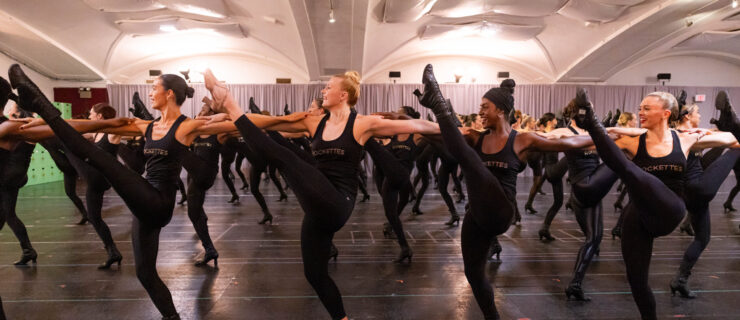The Cost of Healing: Navigating the Financial Side of Injury
Many dancers struggle with their mental health and sense of identity when an injury leaves them unable to dance. For professionals, there is an additional concern: Being injured can threaten their livelihood. This is especially true for freelancers, who may not have access to traditional workplace benefits like workers’ compensation or health insurance. However, no matter your situation, there are programs that can help. Here’s what you need to know to navigate them—and how you can protect yourself for the future.
Reach Out for Help
First things first: If you get injured on the job, report it to your employer in writing as soon as possible. “No matter how minor, always put it in an email,” says Griff Braun, national organizing director at the American Guild of Musical Artists (AGMA), a union that represents many dancers. This documentation can help ensure your access to benefits. For example, there is typically a deadline by which you need to report an injury to be eligible to file a workers’ compensation claim, so you should report any injury just in case.

Next, make sure you have a support system. The Dancers’ Resource at Entertainment Community Fund (formerly The Actors Fund) can help you navigate programs like workers’ compensation and disability insurance, offer financial assistance, and provide emotional support.
Getting the Most Out of Workers’ Comp
Workers’ compensation is a system that provides payments to replace lost wages and cover medical care related to injuries sustained at work. By law, almost all employers have to provide workers’ compensation coverage for their employees. However, the program varies significantly from state to state, and it can be difficult to understand. Your first step should be to contact an attorney who specializes in workers’ compensation. “People worry that hiring a lawyer will be too expensive,” says Luke Knanishu, a licensed clinical social worker at Entertainment Community Fund. “But few people who need workers’ comp are able to pay a lawyer up front. The way it usually works is that a lawyer gets a percentage of the workers’ comp payment.”
This might sound like an unnecessary expense, but Knanishu is adamant that it’s not. “It will be almost impossible to navigate the system by yourself. Lawyers and social workers specialize in this area for years and sometimes still don’t have all the answers,” he says. Plus, a good attorney will help get you as much money as possible—crucial for dancers who often need to pay for care from specialized doctors and physical therapists.
If you have an employment contract, make sure you give it a good look. Additional benefits may be available from your employer, especially if you are a union member. “We’ve been able to bargain for supplements so that, for example, if a dancer is injured they receive some percentage of their pay during weeks when the company is working, in addition to workers’ comp,” says Braun.
Do I Qualify for Disability Benefits?
If you are being paid as an independent contractor rather than as an employee, you likely won’t be eligible for workers’ compensation. However, if your injury is going to keep you out of dance gigs for a year or more, you will probably qualify for Social Security Disability Insurance (SSDI), a federal program that can cover you for injuries sustained on and off the job. “It is a long application process, but your doctors will do it all for you, and just applying does not bar you from returning to work when you are able,” says Knanishu. If you are an employee but are ineligible for workers’ compensation (typically because you were injured outside of work), short-term disability benefits may be available depending on what state you live in. This is something an attorney can help with, too.
Protections for Freelancers
Freelancers can buy their own self-employed workers’ compensation insurance, says Knanishu. This coverage can be expensive, so it may not be an option for everyone. If there are choreographers or directors you work with on a regular basis, try negotiating with them to get a pay raise or stipend to help cover insurance.
It’s also worth asking whether you should be classified as an independent contractor at all. Though state-level employment laws vary and determination is on a case-by-case basis, according to the Internal Revenue Service, when it comes to federal law “the general rule is that an individual is an independent contractor if the payer has the right to control or direct only the result of the work and not what will be done and how it will be done.” In other words, if you are told what time to show up to rehearsal and given specific directions while you are there, you should likely be classified as an employee, not a contractor. However, many employers misclassify their dancers. “Acting on this issue of misclassification would be the single biggest thing that could happen for freelancers,” says Braun.
“Dancers who are working for an employer and struggling, whether it’s with injury, pay or lack of health care, should utilize their collective voice and organize.”

When Benefits Aren’t Enough
If your medical needs exceed the benefits you are able to access, there are other options available. For AGMA members, there is the AGMA Relief Fund. The Entertainment Community Fund also has an emergency financial assistance program, and there may be emergency grants for dancers specific to your area. If you practice other art forms in addition to dance, organizations specific to those disciplines may be able to help. For example, if you are also a singer, you may be eligible for help from MusiCares. If you decide to transition away from dance-related work, another Entertainment Community Fund program, Career Transition For Dancers, can help you navigate that change and provide scholarships for educational opportunities.

Shouldering the Cost
In 2015, Nick Brentley was living a freelance dancer’s dream: He was dancing with two small companies and pursuing multiple outside projects, making a living from dance alone. However, those long dancing hours led him to develop serious knee and shoulder injuries at the same time. He was an employee of one of the companies, so he was eligible for workers’ compensation, and the company offered additional financial support, as well. However, he found the workers’ compensation system frustrating to navigate, and at a certain point his condition wasn’t getting any better. Eventually, when offered the option to close the claim and collect a lump-sum payment, he took it and turned to other forms of work, namely production and wardrobe styling. “Since then, I do dance, but I only say yes to between three and five projects a year, all short-term. And my life feels a lot more balanced that way, because it’s decorated with other things,” he says.
Paying a High Price for Healing
In 2016, Sarah Cecilia Bukowski had just left a full-time dance job. While participating in a choreographic workshop with a possible new employer, she tore her meniscus. Ultimately, the injury required two surgeries. Temporary disability assistance helped keep her afloat, and emergency financial assistance from The Actors Fund helped cover specialized physical therapy. But she was forced to take out a loan to help cover surgery from a specialist who wasn’t in-network with her insurance plan. Once her disability benefits ran out, Bukowski began taking on more work outside of the dance field, including at a gym. “I often think about how things might have been different if I had been injured while I was still dancing for a company, and how I might have been better taken care of,” she says.
Garnet Henderson is a dancer and writer in New York City.




